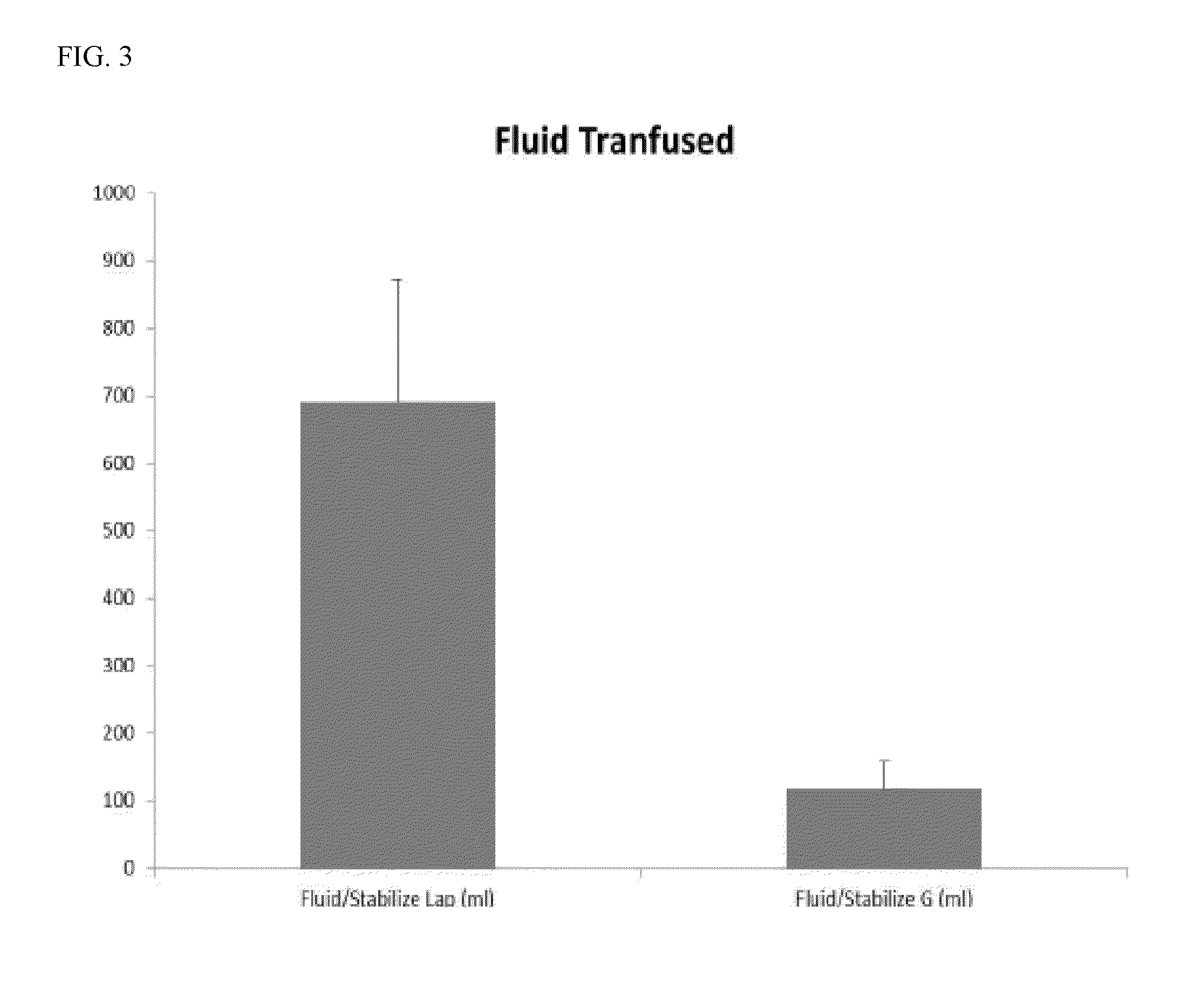Novel hemostatic compositions and dressings for bleeding
a technology of compositions and compositions, applied in the field of new hemostatic compositions and dressings for bleeding, can solve the problems of stroke or other complications, many dressings have only modest antiseptic abilities, and many dressings have little training, so as to improve hemostatic compositions, effectively control bleeding, and improve hemostatic compositions
- Summary
- Abstract
- Description
- Claims
- Application Information
AI Technical Summary
Benefits of technology
Problems solved by technology
Method used
Image
Examples
example 1
Preparation of an Inventive Hemostatic Composition
[0083]The present Example describes preparation of an exemplary hemostatic composition according to the present invention.
Chamomile / Nettle / Alginate Component Preparation
[0084]3.55 g of pharmaceutical chamomile flowers and 1.3 g of dioecious nettle leaves were ground in a mill to a powdery consistency. 200 ml of hot, distilled water was poured over the mixture, and it is boiled for 15 minutes. The mixture was then cooled to a temperature of 40° C. and filtered. The volume of the herbal extract thus obtained was then reduced to 200 ml. 8.3 g of an alginate of sodium was added, and the mixture was maintained at room temperature for 12 hours, with occasional stirring.
[0085]The chamomile / nettle / alginate composition was layered onto a textile material to form a first composite bandage comprising chamomile / nettle and biocompatible polymer. The chamomile / nettle / alginate composition was evenly applied onto a nonwoven material made of a combin...
example 2
Preparation of an Inventive Hemostatic Composition
[0094]First composite bandages with a chamomile / nettle / biopolymer base were prepared as in Example 1.
[0095]A fibrinogen solution was prepared by dissolving 25 grams of fibrinogen in 1% PBS at 37° C. for 60 minutes with vigorous agitation every 15 minutes. It was observed that not all of the fibrinogen entered solution.
[0096]A thrombin solution was prepared by dissolving approximately 1000 KU of thrombin in 100 ml PBS to which had been added 2.5 grams glycine and 5.0 grams glucose.
[0097]The first composite bandages were placed in a plastic pan and 2 grams of the kaolin solution as prepared above was added to each bandage. Subsequently, 4 grams of the chitosan solution prepared above was applied to each bandage. The bandages were frozen at minus 80° C. for 15 minutes.
[0098]Ten grams of the fibrinogen solution was applied, and the bandages were again placed frozen at minus 80° C. for 15 minutes. A suitable volume of the thrombin solutio...
example 3
Preparation of an Inventive Hemostatic Composition
[0100]First composite bandages with a chamomile / nettle / biopolymer base were prepared as in Example 1.
[0101]A fibrinogen buffer was prepared by dissolving the following components in 100 ml of 1% PBS:
100 mM TRIS Buffer16.76g10 mM NaCl2.94g1.5% Sucrose15g80 mg / g Human Serum16g15 mg / g Tween3.0g
[0102]Twenty-five grams of human fibrinogen was mixed into the buffer at room temperature for 40-60 minutes. The resulting solution was stored at 4° C. and was stable for up to two weeks.
[0103]A thrombin buffer was prepared by dissolving the following components in 100 ml of 1% PBS:
150 mM NaCl8.72g10 mM TRIS1.58g40 mM CaCl4.44g100 mM L-Lysine18.76g100 mg / g Human Serum18.76g
[0104]Approximately 1000 KU of human thrombin was added to the thrombin buffer and dissolved at room temperature for 20 minutes. The resulting solution was stored at 4° C. and was stable for up to two weeks.
[0105]Kaolin was prepared by dissolving 10 grams in 200 ml of PBS, follo...
PUM
| Property | Measurement | Unit |
|---|---|---|
| Mass | aaaaa | aaaaa |
| Mass | aaaaa | aaaaa |
| Mass | aaaaa | aaaaa |
Abstract
Description
Claims
Application Information
 Login to View More
Login to View More - R&D
- Intellectual Property
- Life Sciences
- Materials
- Tech Scout
- Unparalleled Data Quality
- Higher Quality Content
- 60% Fewer Hallucinations
Browse by: Latest US Patents, China's latest patents, Technical Efficacy Thesaurus, Application Domain, Technology Topic, Popular Technical Reports.
© 2025 PatSnap. All rights reserved.Legal|Privacy policy|Modern Slavery Act Transparency Statement|Sitemap|About US| Contact US: help@patsnap.com



